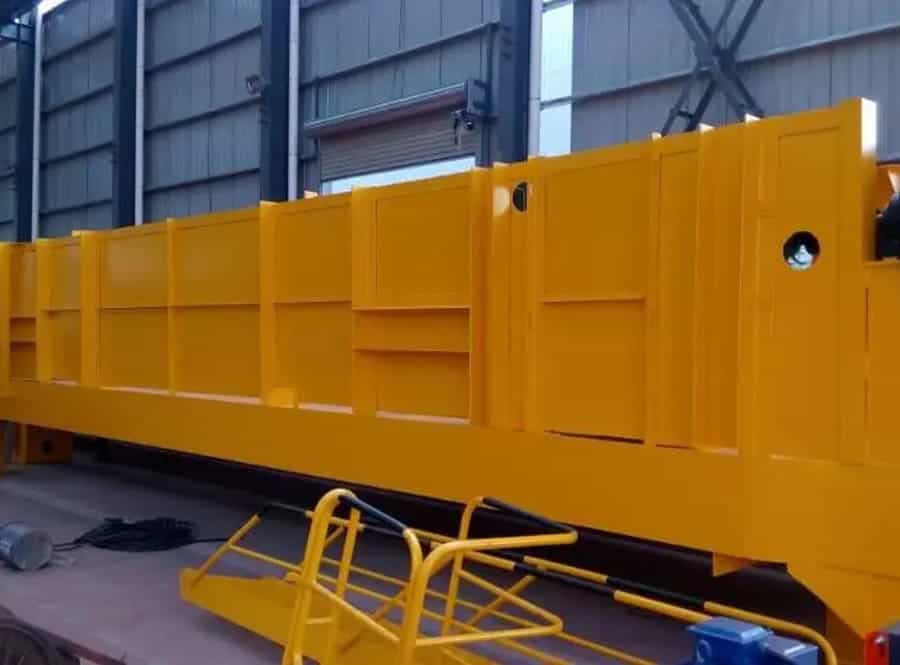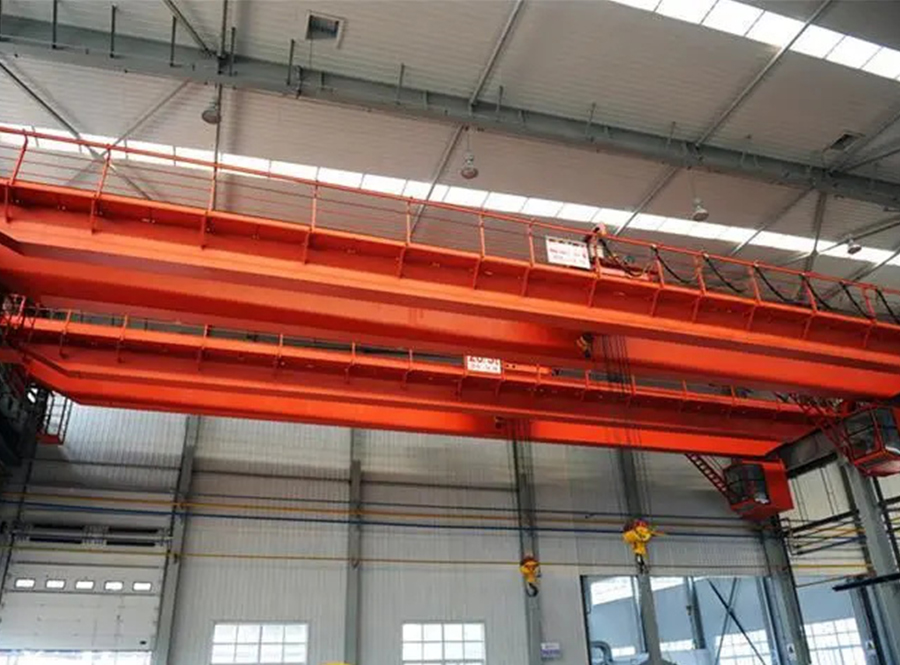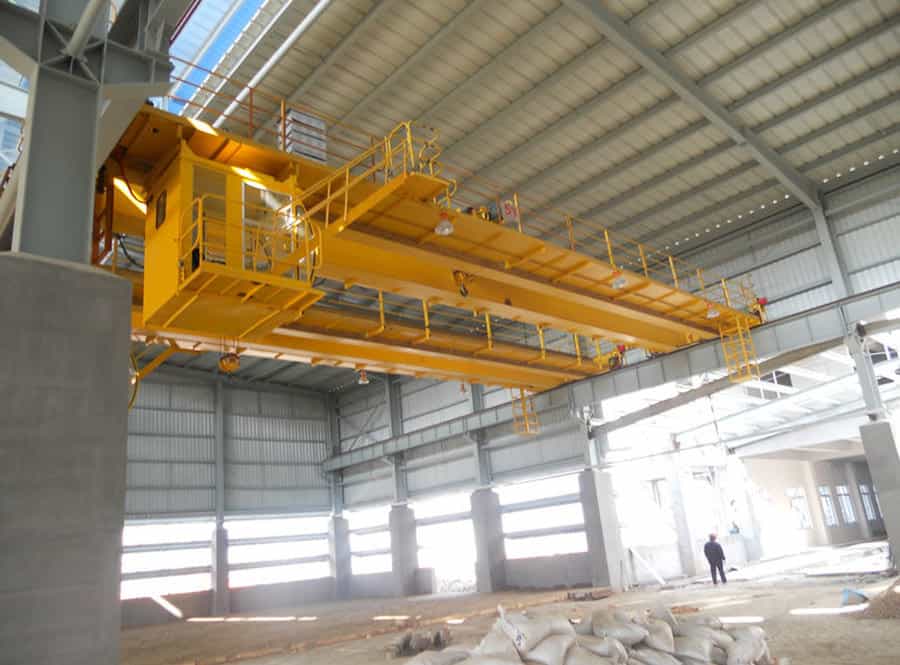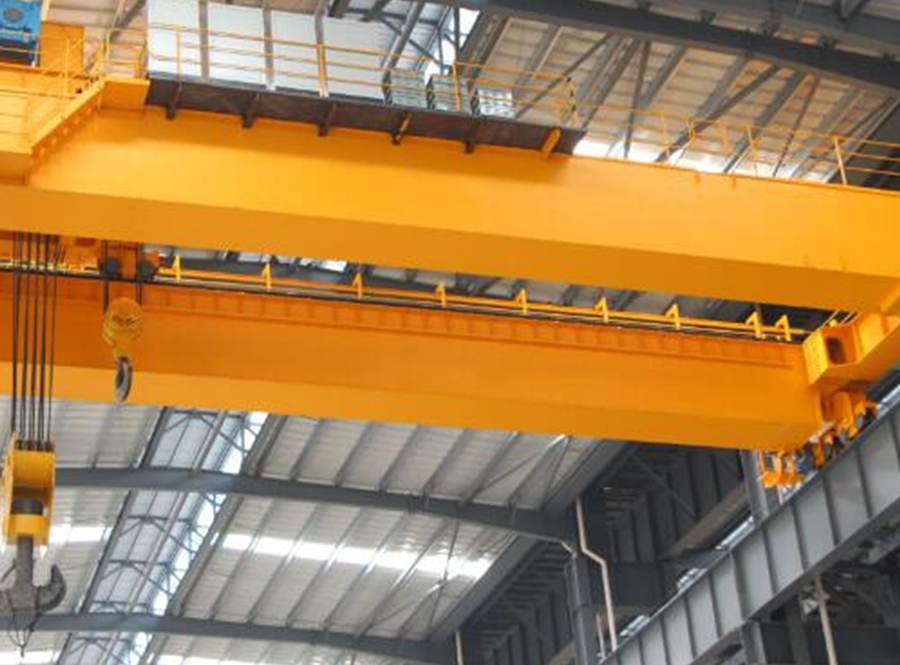Overhead bridge crane for sale is a major lifting and transportation equipment in the production logistics process, and its utilization efficiency is related to the production rhythm of the enterprise. At the same time, bridge cranes are also dangerous special equipment and may cause harm to people and property in the event of an accident.
The driver of the overhead crane is the most active and critical factor in the use of the overhead crane. The driver’s ability to operate the overhead crane is very important and is a major issue directly related to the company’s efficiency and safe production. The author summarizes his own practical experience in operating bridge cranes and puts forward the following operating experience based on the characteristics of bridge cranes.

1. Master the characteristics of equipment and work objects
To correctly operate a overhead hoist i beam, you must carefully master key elements such as the equipment principle, equipment structure, equipment performance, equipment parameters, and operating process of the equipment you are operating. These key factors are closely related to the use and operation of this equipment.
1. Master the principle of equipment
A careful understanding of the principles is the prerequisite and foundation for good operation of equipment. Only when the principles are clearly and deeply mastered, the theoretical foundation is established, the understanding can be clear and profound, and the operation level can reach a certain height.
2. Carefully master the equipment structure
Carefully mastering the equipment structure means that you must understand and master the main structural components of the bridge crane. Bridge cranes are special equipment and their structures have their own particularities, which must be carefully understood and mastered. Carefully mastering the equipment structure is the key to being familiar with the equipment and skillfully controlling the equipment.
3. Carefully master equipment performance
To carefully grasp the performance of the equipment is to master the technical performance of each mechanism of the bridge crane, such as the power and mechanical performance of the motor, the characteristic braking state of the brake, and the safety and technical performance of the safety protection device, etc. Only by mastering the performance can we better take advantage of the situation, scientifically control the equipment, delay the deterioration process, and prevent and reduce the occurrence of failures.
4. Carefully master equipment parameters
Carefully mastering the equipment parameters means that you must understand and master the main technical parameters of the bridge crane, including work type, work level, rated lifting capacity, mechanism working speed, span, lifting height, etc. The technical parameters of each piece of equipment are often different. Depending on the technical parameters of the equipment, there are differences in its performance. Careful knowledge of the exact parameter values for each overhead crane is critical to operating the equipment accurately.
5. Carefully master the work process
Carefully mastering the operation process means mastering the production operation steps and processes served by the bridge crane, and striving for the best design and reasonable operation of the lifting and transportation procedures used in various processes. Only by proficiently mastering the process flow can we master the operation rules, be confident and operate freely, so as to improve work efficiency, safety and reliability.

2. Grasp the status changes of the equipment
The bridge gantry cranes is special equipment, and the operation and operation must ensure the technical status and intact condition of the bridge crane. During the operation of bridge cranes, they are affected by factors such as production conditions and environment. The functions and technical status determined during the original design and manufacturing may continue to change and be reduced or deteriorated. Therefore, the driver must carefully grasp the status changes of the equipment, conduct good operation control of the bridge crane, and perform maintenance and inspections carefully to prevent and reduce failures.
1. Carefully grasp the status changes of the equipment
The equipment needs to be maintained carefully. Clean, clean, lubricate, adjust and tighten all parts of the bridge crane regularly in accordance with the requirements of the maintenance system. Deal with various problems that occur at any time in a timely manner, improve the operating conditions of the equipment, nip problems in the bud, and avoid undue losses. Practice has proved that the life of equipment depends to a large extent on the degree of maintenance.
2. Carefully grasp the status changes of the equipment
Carefully grasp the status changes of the equipment and be able to check the equipment. Understand and master the parts of the bridge crane that need to be inspected frequently, and master the methods and means of inspecting the parts.
3. Skills in monitoring equipment through senses
Skills in monitoring equipment through the senses, i.e. seeing, hearing, smelling, touching and feeling. “Visual” means to use vision to observe the surface of the equipment in order to detect intuitive defects and failures. “Listening” means relying on hearing to detect the status of the device. The driver operates in the cab and cannot see the operating conditions of the equipment on the bridge. Hearing becomes an important auxiliary safety means. When electrical appliances or mechanical equipment are operating normally, they generally only emit very light harmonic sounds, but when they are malfunctioning, they will make abnormal noises. Experienced drivers can determine the approximate location of the fault based on the different changes in the sound. Therefore, identifying diseases by sound should be one of the internal skills of a driver. “Smell” means relying on the sense of smell to detect the status of the device. The electrical coil of the bridge crane catches fire, and the brake pads smoke and emit a pungent odor that can be smelled from a distance. If you find any peculiar smell, you should stop the vehicle immediately for inspection to avoid causing fire or other major equipment accidents. “Touch” is to diagnose the abnormal status of the equipment through hand feeling. Drivers sometimes encounter abnormal conditions in equipment and are able to diagnose and determine the cause of the malfunction. “Jue” here refers to feeling or feeling. Drivers will feel information from all aspects when operating, and experience will tell you what is normal and what is abnormal. When drivers find that they feel different from usual at work, they should immediately trace the source to avoid future troubles.
3. Communicate carefully with ground support personnel
The use of underhung bridge crane to complete lifting tasks requires the cooperation of many people such as drivers, commanders, and rigging personnel. Sometimes its operating scope also includes other equipment and operators, so as a driver, you must carefully work with the ground. Communicate and cooperate well with the personnel. The work objects, equipment status, work instructions, and operating environment must be confirmed before proceeding.
The driver must confirm the command language with the ground personnel before operating. If the command language is not agreed upon, the operation cannot be carried out. The driver must concentrate when operating and operate according to the commander’s signals. Before each operation, the driver should ring the bell to remind the personnel at the operation site to pay attention. At the same time, pay attention to the situation around the lifting objects. No one is allowed to stay under the hoisted object, under the arm, or in the area where the hoisting weight rotates. When the line of sight between the driver and the hoisted object may be blocked during hoisting, the driver should carefully inspect the on-site environment within the hoisting range and confirm the hoisting path of the hoisted object before hoisting. During the hoisting process, the signal contact with the commander should be strengthened. At the same time, the commander should stand within the driver’s line of sight to give commands to avoid hoisting safety accidents due to blocked sight. If there are only drivers and hookers working on site, the driver must work closely with the hookers and work in unison. When moving and lifting heavy objects, you should only follow the signal given by the hooker. However, no matter who sends the “stop” signal, you should stop immediately.
4. Correctly determine the nature of the emergency and take appropriate emergency response measures.
Bridge cranes are dangerous equipment and may cause property damage and casualties once they are out of control. As a driver of an overhead crane, you should correctly judge the nature of the emergency and take appropriate emergency response measures. It is a must-have skill to avert danger or minimize accident losses in dangerous situations.
The emergency state of the bridge crane can also be called the state of the bridge crane approaching danger. It is characterized by the sudden appearance of equipment (device) in a dangerous, failed, and out-of-control state. Improper handling will cause the consequences of an accident. There are many types of emergency situations for bridge cranes. The most likely ones include failure of the lifting brake mechanism, sudden power loss of the crane, loss of control of the trolley control mechanism, broken wire rope, crane fire, lifting limit failure of the lifting mechanism, etc. situation. We should be fully prepared in terms of ideological understanding and establish emergency plans for various possible dangers.
In addition, you should also have a clear understanding of the production operation procedures, so that you can better cooperate with the work and avoid accidents. For example, if the hoisting brake fails when there is a heavy object on the crane hook and the heavy object slides down, the driver should continuously ring the bell or whistle to signal all personnel on site to avoid it.
It is the responsibility of the overhead crane driver to master the essentials of operating overhead cranes. The author has accumulated many years of operating overhead cranes, summarized and explored the above experience, and conducted an explanation and analysis, which is not comprehensive. I hope that this can attract criticism and guidance from colleagues and promote the common improvement of overhead crane drivers’ operating skills.





















